
15 minute read
CHANUKAH ON THE BEACH
AROUND THE
COMMUNITY Chanukah on the beach
BY NOMI KALTMANN COURTESY: TABLET MAGAZINE
When 100-year-old Holocaust survivor Ella Blumenthal celebrates Chanukah, it’s very different than it was when she was growing up in Poland. These days, when she lights the candles – on a menorah salvaged from the Warsaw Ghetto – at a public lighting at the local synagogue, Beit Midrash Morasha, in Cape Town, South Africa, it is close to 9pm. And it is hot, boiling hot, outside.
Her granddaughter, Lior, who lives in Johannesburg, usually comes to spend time with Blumenthal over Chanukah. “During the summer, when Chanukah falls, Johannesburg is deserted. Everyone is on vacation, so I come to the beach to spend time with my grandmother and we usually celebrate Chanukah together in the heat,” she said.
In Australia’s biggest cities large Chanukah in the Park events occur across the eight days of the festival, with locals enjoying barbecues, fireworks and festivities. Smaller festivities are take place in Australia’s regional cities.
In tropical Cairns, Rabbi Ari Rubin makes the most of his unique location by infusing the festival with local culture. In 2019 he had a huge menorah made using mangoes.
Last year, after seeking permission from the local aboriginal Australian custodians of the land, the Yidiny people, Rubin used a menorah constructed from didgeridoos.
“Didgeridoos symbolise Australia’s indigenous heritage and we, the local Jewish community, wanted to showcase our connection to the local aboriginal people,” the rabbi said. “The aboriginal elders we sought permission from to use didgeridoos for our menorah were very supportive and thought it was a great way to commemorate our freedom of religion in Australia. It also emphasised the sense of kinship that many Jewish people feel with the indigenous community.”
Rubin also takes his Chanukah show on the road to other, smaller Jewish communities. Sami Hall lives more than 300 kilometres from Cairns, in Townsville, where the Jewish community has only 70 residents and no formal synagogue or full-time rabbi. But Hall looks forward to Rubin arriving every Chanukah to light the public menorah in the main street on one of the nights of the festival.
“It’s not quite dark when the candles are lit. It’s just peaceful,” she said. “I don’t know how to describe it. I love the lighting of the candles and the reminder that God trumps all, no matter what adversity you face,” Hall said.
She said that Chanukah “makes me feel part of something greater as a Jewish person. While I am in my tropical paradise lighting candles, someone across the world is lighting candles in the frost and cold, and we are connected through this tradition.”
Elianne Ny, a 20-something from Uruguay, remembers attending Chanukah celebrations each year on the capital city’s main boardwalk, the Rambla of Montevideo, an avenue that runs up the coastline.
“For me, growing up in Uruguay, Chanukah was always a time for family and is a very relaxed kind of festival,” she said. “The good side of having Chanukah in the summertime means that it is always chilled.”
Most years, by the time Chanukah arrives, school is over for summer, so children are free to stay up late all eight nights, partaking in the festivities.
“People are much more relaxed at this time of the year. People organise social activities and get together with friends,” said Ny. “It is a festival that lends itself to flexibility. You are already hanging out with friends so you light candles together.”
Around the Southern Hemisphere, Chanukah traditions have been adapted. Rabbi Mendy Shemtov facilitates public menorah lightings across Uruguay. That includes the beachside town of Punta del Este, which is a favoured destination for many South American holidaymakers. He also positions menorahs in Uruguay’s airports to welcome global travellers.
“When this tradition was first established, about 35 years ago, it was a novelty, as Uruguay was coming out of a dictatorship, so the fact that Judaism was celebrated publicly was a big deal,” said Shemtov.
Still, depending upon where Chanukah is celebrated, precautions may well be in order.
Rubin, a dual American and Australian citizen, laughs as he recalls the Chanukah. celebrations he experienced in the Northern Hemisphere over the years.
“One year I remember going to hand out doughnuts on a street corner in Pittsburgh, when it was absolutely icy. My fingers were completely frozen and the jam hardened in the doughnuts because it was so cold.
However, in Far North Queensland, where I now live and serve as the fulltime rabbi, you have fire bans. You can’t always have fire displays and fireworks because there are concerns these could spark bushfires.”
Rabbi Ari Rubin and his mango menorah in Cairns (photo courtesy of Rabbi Ari Rubin)

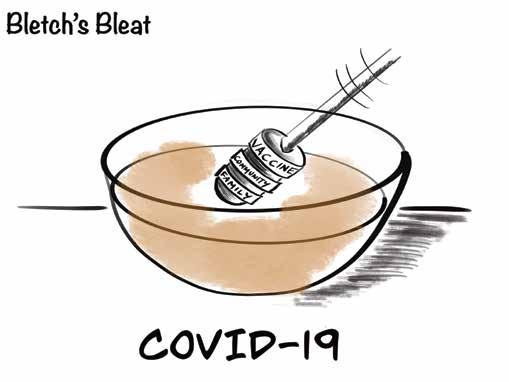
JEWISH FIGURES
DR. YVETTE ALT MILLER COURTESY: AISH.COM
Jewish celebrities and historical figures, past and present.
Jewish or not? With some, it can be hard to tell.
RASHIDA JONES
Rashida Jones grew up with a strong Jewish identity. Her Jewish mother, the actress Peggy Lipton, and her famous African American father, Quincy Jones, made sure Jones always knew about her Jewish heritage and sent her to Hebrew school. In 2012, Jones appeared on the genealogy TV show Who Do You Think You Are? and learned on air that members of her mother’s family were murdered in the Holocaust. Her partner is Ezra Koenig, the Jewish front man for the indie rock group, Vampire Weekend.
PINK
Born Alecia Beth Moore in 1979, the singer's mum – ER nurse Judy Kugel Moore – is Jewish. Her parents divorced when she was young. Pink has proudly described herself as “a Jewish woman” and described her mom as a "typical Jewish mother”.
SCARLETT JOHANNSEN
Actress Scarlett Johannsen has described herself as a New York Jew. Her mum, producer Melanie Sloan, is Jewish and her dad Karsten Johansson, who is not Jewish, is a Danish-born architect.
JACK BLACK
Born Thomas Jacob Cohan, comedian, singer, songwriter and actor Jack Black’s mother, Judith Love Cohen, was born Jewish. His father, Thomas William Black, converted to Judaism. The couple worked as engineers on the Hubble Space Telescope.
JOAQUIN PHOENIX
Joaquin Phoenix has been open about his difficult childhood: his parents belonged to a cult in Latin America. The family – including Phoenix’s Jewish mother, Arlyn Dunetz Phoenix – has since left the cult and his parents divorced. “I’m Jewish” the Academy-award winning actor has declared, adding that he’s still wary of organised religion after his traumatic childhood.
DRAKE
Born Aubrey Drake Graham, Drake’s mum, Sandy Graham, is Jewish. Drake’s dad is the African American musician Dennis Graham. Drake’s parents divorced when he was young and Drake was brought up by his mum in Toronto’s Jewish community. When he turned 31, Drake threw himself a star-studded “rebar mitzvah” party.
DANIEL RADCLIFFE
The Harry Potter star’s mum, born Marcia Jacobson, is Jewish. Daniel Radcliffe’s middle name, Jacob, might point to his mother’s Jewish-sounding maiden name. (His dad, Alan Radcliffe, is an English Protestant.) Radcliffe has described himself as “very proud” to be Jewish.
DANIEL DAY LEWIS
The actor’s Jewish mother, Jill Balcon, was also in showbiz. (Lewis’ dad, Cecil Day-Lewis, was not Jewish and served as England’s poet laureate.) He is married to Rebecca Miller, the daughter of playwright Arthur Miller.
HARRISON FORD
The parents of Dora Nidelman, Ford's mother, were Jewish immigrants from Minsk. Ford has said that he taps into his Jewish identity when he’s acting.
TONY CURTIS
Born Bernard Schwartz, Curtis’ parents were penniless Jewish immigrants from Hungary. He changed his name at the behest of Hollywood studio bosses to the Anglo-sounding Tony Curtis. Later in life Curtis embraced his Jewish identity, connecting with his local Chabad near Las Vegas, where he lived and performing mitzvot such as putting on tefillin.
RUTH WESTHEIMER
Famous sex educator “Dr. Ruth” was born into an Orthodox Jewish family in Germany in 1928 and served as a sharpshooter during Israel’s War of Independence.
ESTEE LAUDER
Born Josephine Esther Mentzer in 1906, Estee Lauder collaborated with an uncle, who was a chemist, to create makeup. She started selling it in 1946 and soon became the wealthiest, selfmade woman in the world. Lauder is one of many Jewish makeup moguls. Others include Helena Rubenstein, Charles Haskell Revson (founder of Revlon) and Bobbi Brown.
VIDAL SASSOON
Another hero from Israel’s War of Independence, the British Jewish Vidal Sassoon (born into a poor Jewish family in London in 1928) served in Israel’s elite Palmach fighting unit.
ZSA ZSA GABOR
An actress who hid her Jewishness, Zsa Zsa was born Sari Gabor in Hungary in 1917 and fled to the United States in 1941.
LAUREN BACALL
The sultry WWII pin up was born Betty Joan Perske in the Bronx in 1924 to Jewish parents who’d emigrated to the United States from Russia. She was one of many actresses who downplayed their Jewishness at the time and they included Hedy Lamarr.
JONAS SALK
The inventor of the polio vaccine was a Jew, as was Dr. Albert Sabin, Salk’s rival who developed the “live” polio vaccine that is still in use today. When Dr. Salk announced that his polio vaccine was safe and effective on 12th April 1955 people celebrated in the streets and churches rang their bells in towns and cities across the United States.
SIGMUND FREUD
Born Sigmund Shlomo Freud in presentday Czechoslovakia in 1856, the father of psychoanalysis became a worldfamous professor in Vienna. His renown wasn’t enough to save him from the Nazis. When his beloved daughter Anna was arrested by the Gestapo in 1938 the entire Freud family left their home and fled to England.
CAMILLE PISARRO
This famous French impressionist painter – a close friend of Monet and Cezanne – was born on the Caribbean island of St. Thomas in 1830 and named Jacob Abraham Camille Pissarro. He’s one of many well-known Jewish painters (think of Modigliani, Soutine, Lieberman and Pascin), whose Jewish identity is not widely known today.
DR. ROSALIND FRANKLIN
The British chemist who helped discover DNA missed out on sharing the Nobel Prize with her colleagues Frances Crick, Maurice Wilkins and James Watson. Watson publicly stated that Franklin should have been awarded the Nobel too. She died tragically young in 1958 at the age of 37.
LEVI STRAUSS
Born in Bavaria in 1829, Strauss provided miners in the California Gold Rush with durable work clothes. He made a fortune and became a major Jewish philanthropist.
IRVING BERLIN
The songwriter who brought us White Christmas and Easter Parade was a Jew, born Israel Beilin in Russia in 1888. During World War I Berlin teamed up with Harry Houdini, Al Jolson and other Jews in show business, forming the Rabbis’ Sons Theatrical Benevolent Association, which raised money for the Red Cross.
HARRY HOUDINI
Born in Hungary in 1874, Houdini’s real name was Erik Weisz. His father was a rabbi and Houdini maintained a strong Jewish identity in his private life.
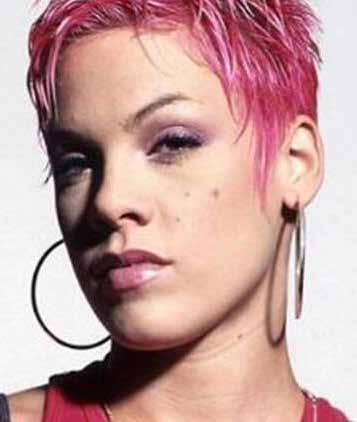
Did you know they are or were Jewish?

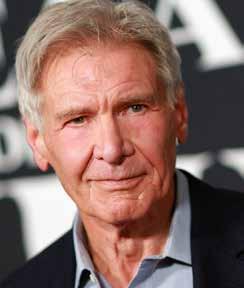

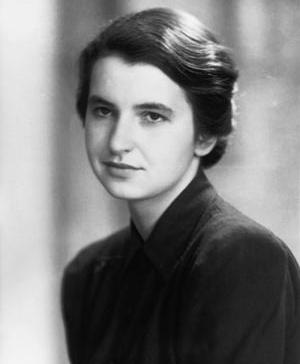
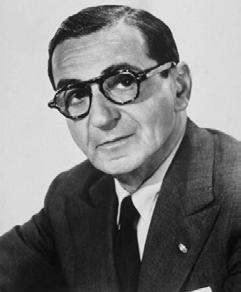
CONSIDERED OPINION
Why the paper version of your date is better than reality
ALEEZA BEN SHALOM COURTESY: AISH.COM
Why you shouldn't be disappointed when your date does not match who you were envisioning.
You’re sitting across from a date and something feels off – they're just not what you were expecting. Why does the paper version of this person look so much better than they do in real life?
Here’s why reality doesn’t always match up with the date you envisioned.
Your Imagination Does a Great Job
We have really great imaginations. Just as the movie version of the book you envisioned doesn't compare to what you imagined the same thing happens with a dating profile. Reading a dating profile is like reading a book. It's better because it stems from your imagination. What you project from the details on paper into an imagined persona is almost never equivalent to the real human being you sit down with on the date.
You read someone’s profile and feel immediately connected to the other person and there’s something there. Your mind likes doing puzzles and it starts to fill in all the gaps. You make everything look “picture-perfect” in your brain. You’re looking forward to meeting them, envisioning how great they will be, based on this idea you have in your mind, which isn’t exactly based on reality, but on figments of your imagination.
Is it any wonder they’re not actually “picture-perfect”? So, you're freaking out inside, feeling so frustrated. Your imagination is doing a great job, as it should. But don’t be disappointed when your date does not match your imagination.
So how do you get over this hurdle? You need to slow down your thinking and be present on your date. You need to take a look at the person sitting in front of you. Put aside that image of who you think they are from what you read and get to know the person in front of you.
Don’t try to compare your vision to the reality. Just enjoy and connect with the reality of the situation, whether they are who you expected or not, and go with the flow.
Editing Your Profile
Now let’s flip the scenario. Let’s say you’re writing your own dating profile. You have time to refine that amazing piece of paper. How many times do you write or rewrite, order or reorder? You edit yourself, right?
And then what happens? You show up to the date and you’re a little unedited. You’re totally raw. You’re there in the flesh and maybe you’re not as eloquent as the words on the page. Maybe you wrote it. Maybe you had somebody else help you write it. Whatever you did, it just sounds better on paper than how you present in person.
You’re in good company. A lot of people edit their profile and most people don’t meet others’ expectations. Even still, you need to show up with confidence. Go in with a smile and put your best foot forward, and hopefully the person across from you will like the real, unedited version of you.
Photo Perfect
You have the opportunity to enhance what’s in a photo but when you show up in person, you still look like you. Should you edit your photo? Use photoshop? Who are you fooling?
Some people look amazing in photos. Do they look as good in real life? Not always. It’s a weird thing. Some people look great in real life but are not photogenic at all.
I had this roommate once. She was gorgeous and she took the most horrible photos. She didn’t even like them! She’s like, “I don’t understand, Aleeza. Why can’t I take a good photo?” I couldn’t explain it. Some people just don’t match what is showing up in a photo. If someone is used to seeing you one way, then it’s the only image they see of you, playing over again and over again in their mind. When they finally see you in person and it doesn’t match, it gets confusing.
You and your date need to give your eyes time to get used to the person in front of you and to let the image you had in your mind fade away. Don’t be surprised if at first a photo doesn’t match what you’re seeing in person. Allow the person to grow on you over the date. Only after spending time with them can you truly judge if this person is for you. Avoid making a snap decision and ending something before it starts.
You’ve Been Putting People on Pedestals
By the time we meet someone in person sometimes we’ve already put them on a pedestal in our mind. We like what they’ve written on their profile and they say something we agree with. We build them up higher and higher in our minds. Well, where do they have to go from there?
The only place to go from there is down. So, you'll have this deflated feeling and that’s normal. It might just not feel like it’s “up to par” because it’s your lovely imagination and feelings have built it up so much.
Again, give your brain time to catch up to your reality and to see who this person is, and allow yourself time to enjoy their company. Don’t be fooled by your initial disappointment. It will, hopefully, fade when you will really get to know them.
May you have the clarity of mind to judge your dates favourably with a clear mind and a positive attitude.
Judaica quiz answers
1. Tefillin – the bayit is the box in which the parchments are housed, the retzuot are the leather straps 2. Caesarea 3. a) Los Angeles 34 degrees north b) Tel Aviv 32 degrees north c) Shanghai 31 degrees north 4. The Crusades 5. Mule - Joseph Trumpeldor helped to organise the Zion Mule Corps in WWI and they participated in the Gallipoli Campaign 6. Judah 7. Anne Frank 8. Tailor, Shoemaker and Baker 9. The (Third) Zionist Congress 10. Emma Lazarus 11. The New Year for Trees 12. The Arabian Leopard, the others had already become extinct in the region much earlier 13.Frankfurt 14.Tunisia 15.The Battle of Beersheba 16.He was the first to jump into the Red Sea, following which the waters divided to allow the Israelites to pass through on dry land 17. Panama 18. The Fast of the 10th of Tevet 19. King Saul to his son Jonathan (arguing about David) 20. He was born in Berlin, Germany (1925) 21. Southampton, West Ham United, Manchester City, Celtic and Portsmouth 22. Pope Pius XII 23. True 24. Leon Uris 25.Operation Magic Carpet is a widely known nickname for Operation On Wings of Eagles (Hebrew: Kanfei Nesharim), an operation between June 1949 and September 1950 that brought 49,000 Yemenite Jews to the new State of Israel.




